The Joplin History and Mineral Museum’s Prairie Project
Food, spices, oils, and fibers – pollinators excel at making these items possible. The complexity of the pollinator world is astounding because of the roles they play and their vitality to healthy ecosystems. We celebrate these achievements through the incredible people and projects that are working to conserve pollinators. We hope these stories encourage and empower you to better understand who our pollinators are and what actions you can take to help them. This month we interviewed Christine Allgood, founder of The Prairie Project at The Joplin History and Mineral Museum in Joplin, Missouri.
A volunteer helps with native plant preparation. Photo by Christine Allgood
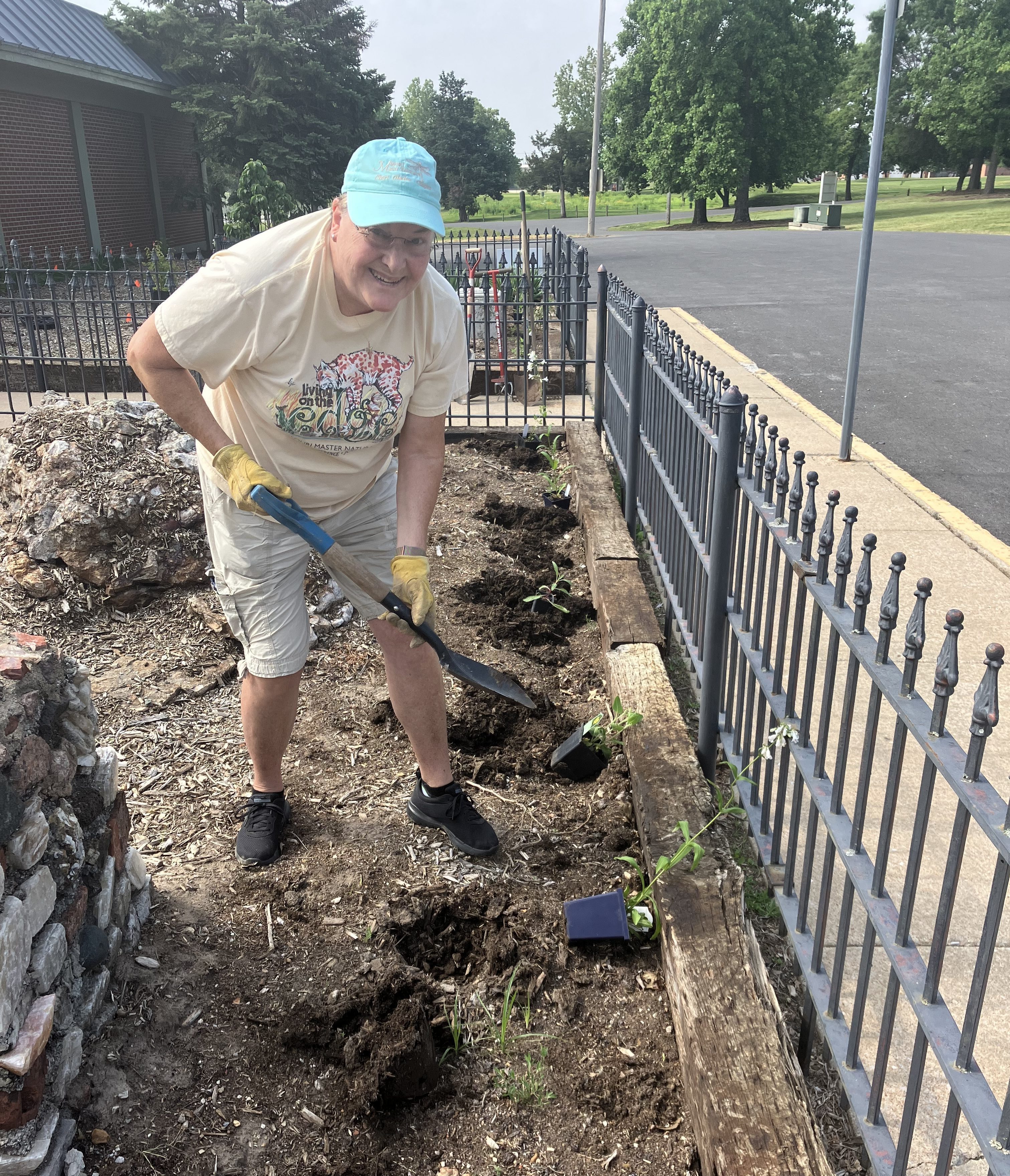
Q: How would you describe the Prairie Project?
A: The Prairie Project is a passion project that hopes to educate and inspire Joplin History and Mineral Museum visitors about the natural world around them. I was inspired by the Shiloh Museum of Ozark History to engage our community in a way that had not previously been done by bringing in schools and gardening groups to help return the museum grounds to the prairie land it was built on. Currently, the museum sits on a 160 acre public park that, in midsummer, is 160 acres of dead Bermuda grass. My vision was to turn it into something that would benefit the museum visitors and our pollinators by inviting back some of the area’s native plants and animals through restoration. The Prairie Project is 100% community and volunteer operated, run by folks who are passionate about learning and are lovers of the outdoors. This enthusiasm helped make the museum the perfect place to get this restoration project off the ground and into education for the community.
Q: How did your project start?
A: The project started while I was employed at the museum as an assistant. When the monarch butterfly was added as a candidate species to the endangered species list, the idea came to me to put some of that land to work to help save the butterfly. Initially, I brought seeds from my own native garden at home and worked on the space alone but I still had grand plans for what the space could be. I took the idea to my boss, who agreed, but I would have to get it completely funded by an outside source. I spent maybe two days applying for grants through anyone I could think of, such as Walmart, before my mom called and said that she had run into our county extension agent at an event who was interested. The extension agent visited the Museum and recommended our local Audubon chapter, the arborist for the City of Joplin, and a contact at Pheasants and Quails Forever. From there it was just a chain reaction of "I love this idea, you should call so-and-so, they could probably help you with this part..." From there, all those connections grew into a U.S. Fish and Wildlife Service guided project run by a community of volunteers, three school districts, and twenty local businesses all working together to restore this prairie.
Volunteers preparing the museum grounds for planting. Photo by Christine Allgood
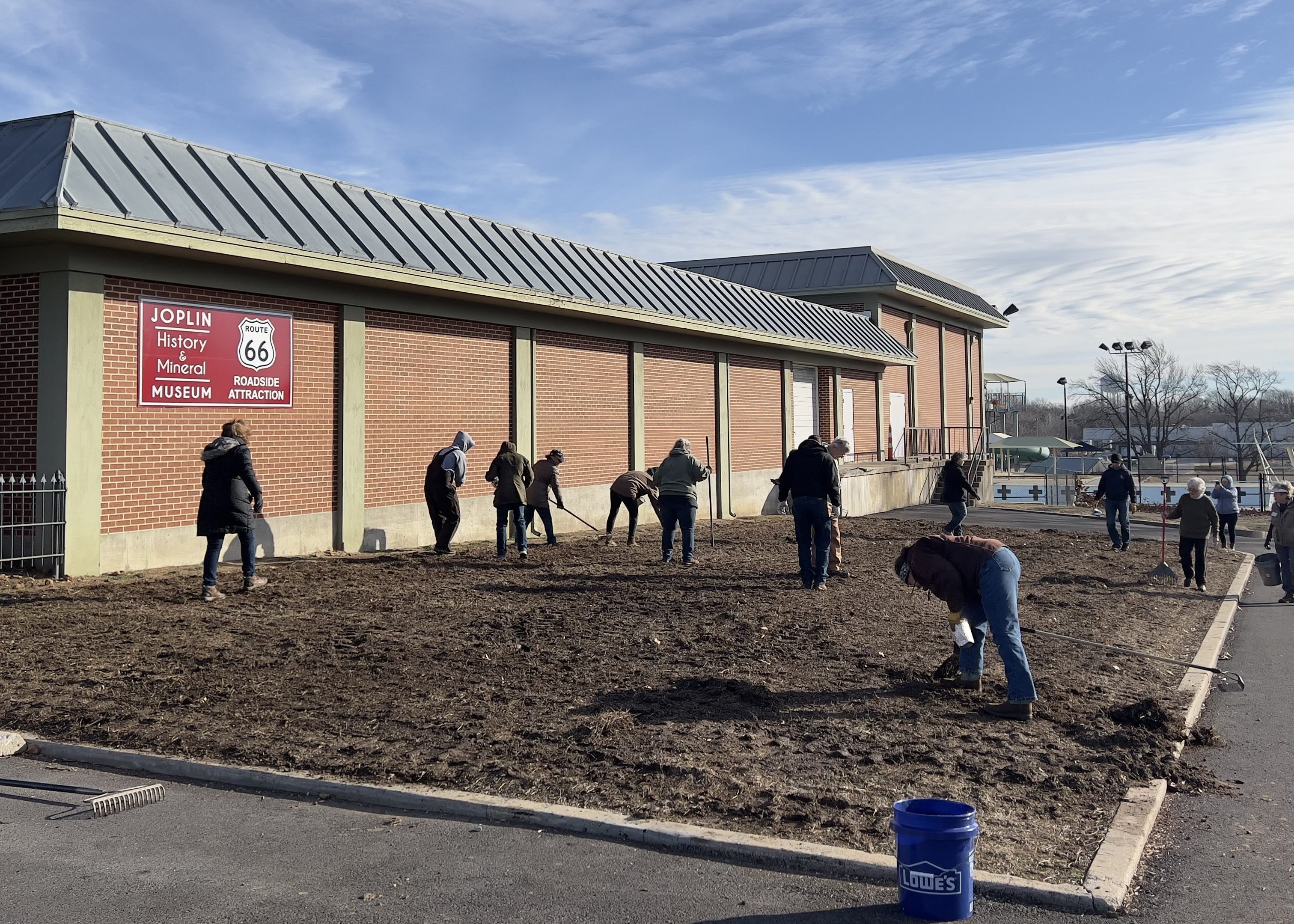
Q: What got you interested in or inspires you about pollinators?
A: So many of our needs can be traced back to our pollinators. Without pollinators, so many of the foods we rely on to nourish ourselves wouldn’t exist. They are essential for life and deserve our protection, so we need to ensure that they thrive through education, especially of our young people. The things they learn in early life will help mold a heart for conservation for the future. Engaging kids with their natural surroundings and showing them its value is so important to me.
Q: Which pollinators does your project seek to help and what makes your efforts unique?
A: Our hope was to bring native animals, including pollinators of all kinds back into the park with Missouri native plants. The monarch butterfly is one we especially hope to encourage. The monarch being listed as a candidate species on the endangered species list was the original inspiration for the project. The monarch holds a very special place in Joplin hearts. There are a lot of very sweet stories around the Joplin Tornado of 2011 that are monarch-related and now there are monarch artwork and sculptures throughout the town to commemorate this event. The city also has "monarch waystations" at many of its parks. We hope to increase birds back to the prairie, who require the same habitat.We see very few birds drawn to our area just because there is nothing but open bermuda grass with a few trees sprinkled in the park, leaving them with little habitat. We really wanted people, and kids especially, to witness the wide variety of birds in our area. We also thought it would be great to get some insect varieties out there because they would be of special interest to kids and they are a great subject for youth programming.
A mural in progress to honor Joplin’s pollinators. Photo by Christine Allgood
Q: What is the target audience for this work?
A: Largely museum patrons and school-age children as we have frequent school field trips from all over the area that come to learn about Geology and local history. My hope is to insert a little pollinator education in there too.
Q: What are the primary goals of your project?
A: Our primary goal is to expand the education we can offer about the natural world. We are the Mining and Mineral Museum, you can imagine how geology and what’s underground is a large part of what we do. Restoring mined land and bringing native animals, including insects, back to the area is a goal of one of our partners, the U.S. Fish and Wildlife Service, and we wanted to help.
One of the challenges our museum faces, and our town in general, is that if you want to make an area a spot that people can visit, you have to do your research to make sure there are no mine shafts directly below that might result in cave ins, a constant problem for construction in our area. The process of mining leaves you with all kinds of soil problems. If it's not downright poisonous, it is often devoid of the normal complexity needed to host a healthy ecosystem. You can be left with patches of clay that won't drain water leading to drainage issues, you can have a spot of solid chert where nothing will grow, or sediment can build up in water systems leading them to be unable to support any kind of aquatic and plant life. It was great to have the Service there to explain the importance of restoring those places to equilibrium to our community volunteers and to be a very, very, small part of their large mining lands restoration mission.
Volunteers before a planting day at the Joplin History and Mineral Museum. Photo by Christine Allgood
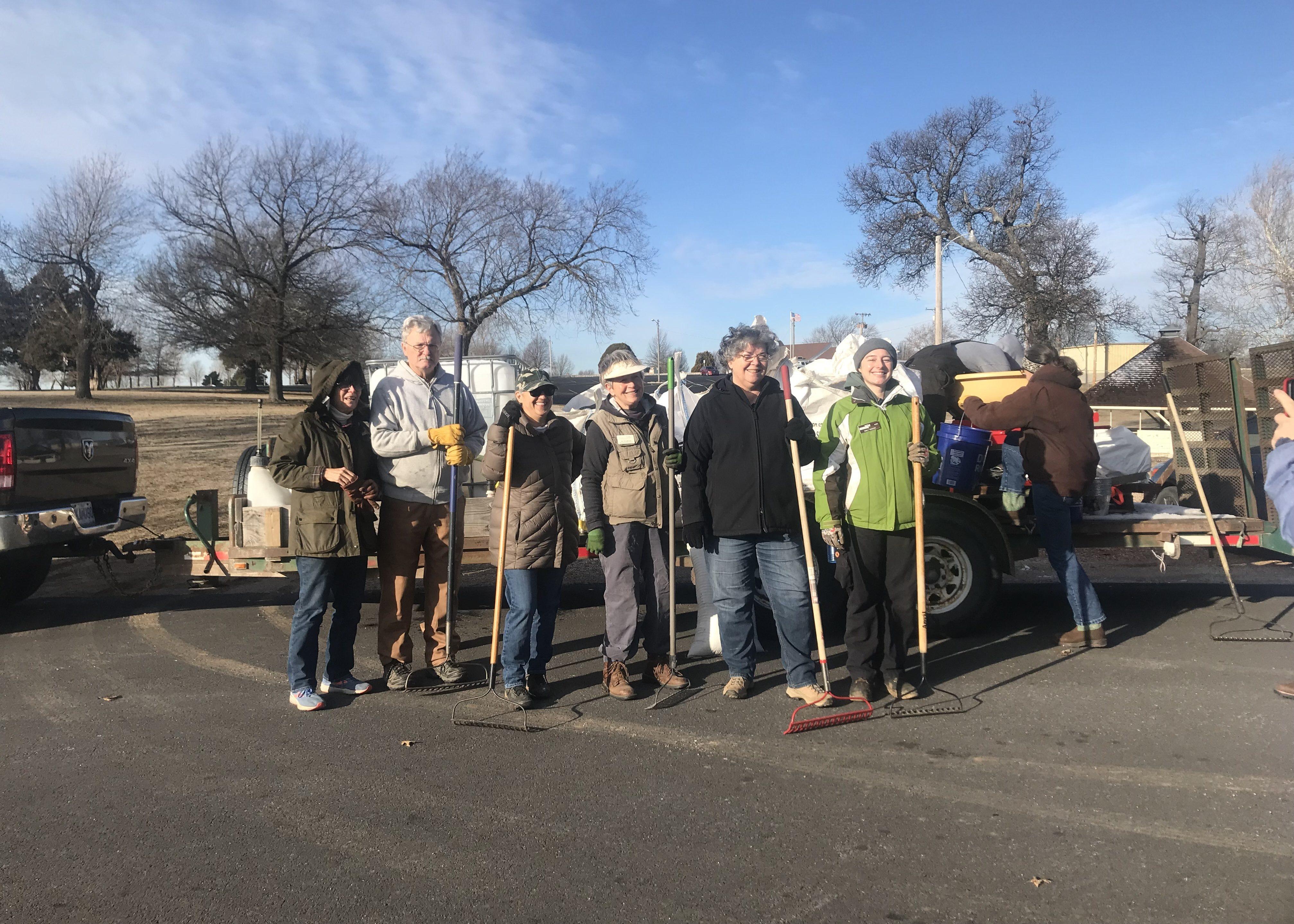
Q: What successes have you achieved?
A: The fact that The Prairie Project exists at all is a huge achievement considering we started with no money, no supplies, no know-how, and no volunteers. The museum is now surrounded by native wildflowers that host a huge variety of butterflies, bees, spiders, birds, etc. We have hosted several well-attended volunteer gardener days where we thank the participants with treats donated by local restaurants. Local media frequently comes out to see what we’re up to for stories. We also have integrated collaborative pollinator art projects involving multiple school districts that has become a destination for people traveling Route 66.
Q: What is your biggest challenge?
A: Our biggest challenge was encouraging people to come out to visit the museum so they could see what we are working on, honestly. It’s small and outside of town, so many of our own citizens don’t even know we’re there. It’s Joplin’s best kept secret, in my opinion.
Q: What is something about pollinator conservation or your project you wish more people knew?
A: How simple it is to create places for pollinators, and any amount of space is good for a variety of pollinators. It can be done anywhere with whatever dirt you’ve got and takes almost no maintenance.
Q: What is the best way to get involved in your conservation work?
A: You can contact the museum to be put on the Volunteer Gardner email list or follow us on Facebook for upcoming events
Signage showing the prairie restoration in progress. Photo by Christine Allgood
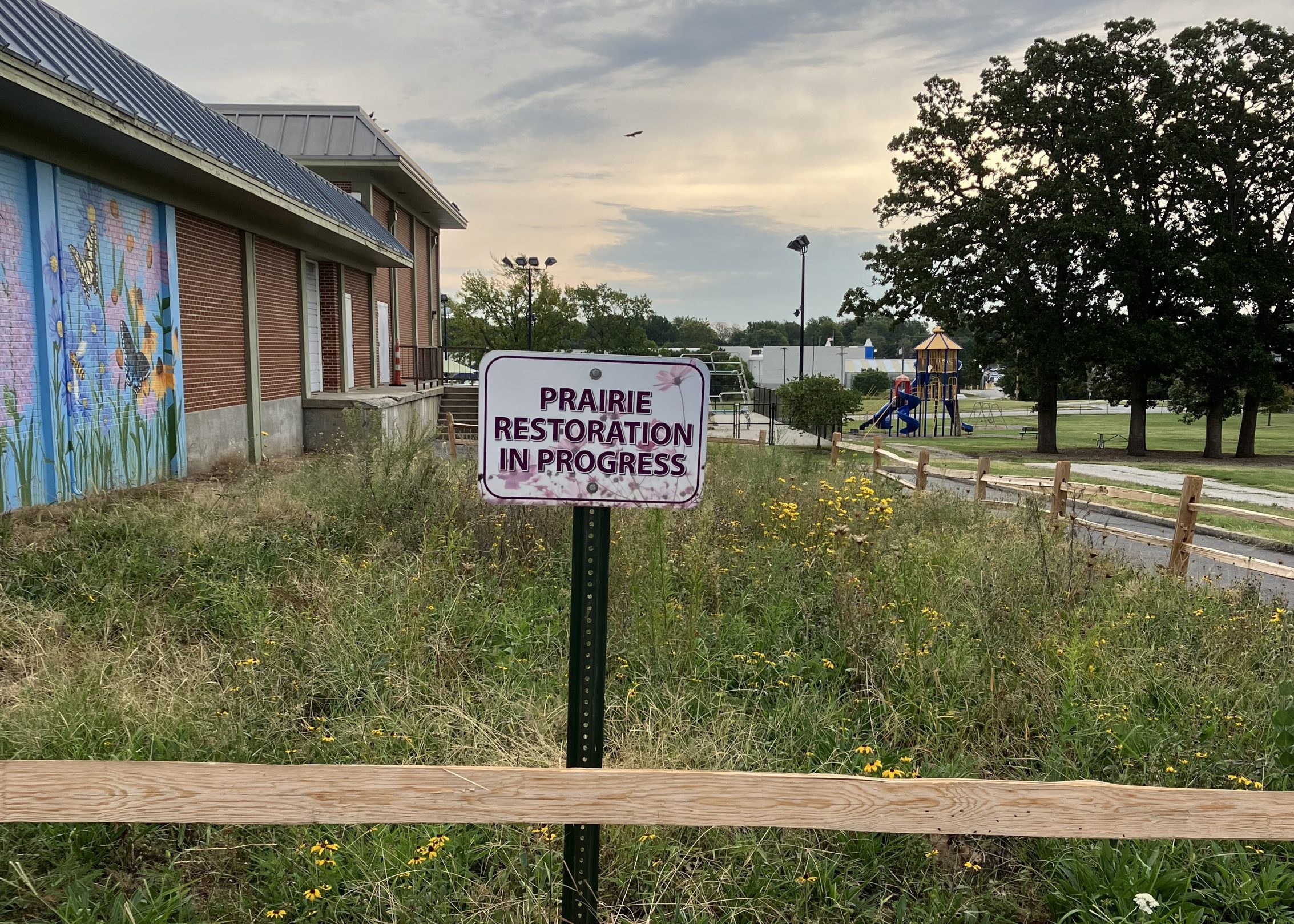
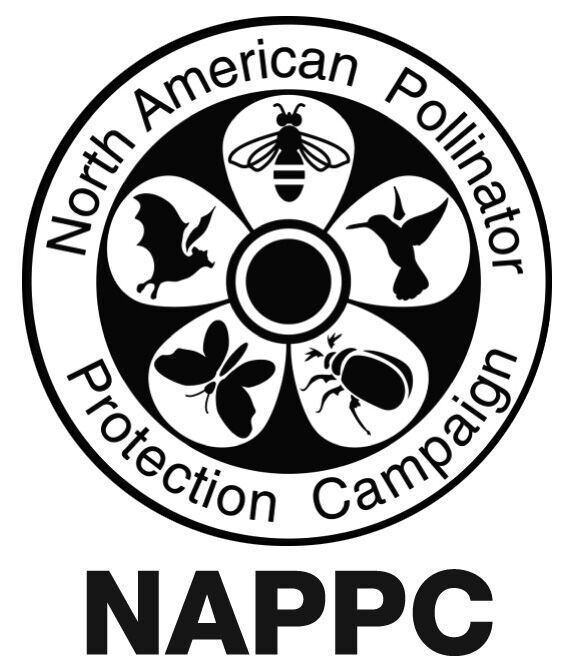
Alone no individual or entity can address all pollinator conservation needs, but through collaborative conservation we can and will make a difference for pollinators and the ecosystems they help support. Keep following our Pollinator Conservation Spotlight series to hear more inspiring pollinator conservation stories. Do you know a great project or organization that is addressing critical pollinator conservation topics and deserve their moment under the spotlight? Let us know!
Article contributed by Savannah Christiansen, Pollinator Partnership for the NAPPC Pollinator Communications Taskforce's Pollinator Conservation Spotlight Series.
